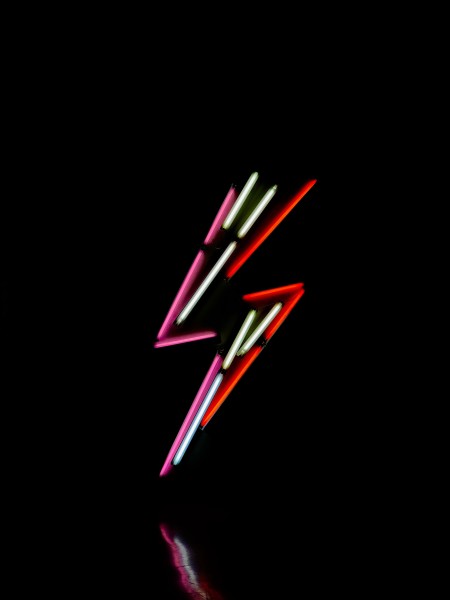
The following essay is part of SmokeLong Quarterly’s Why Flash Fiction? series in which flash fiction writers share why they write and read flash fiction. If you’d like to share your own experience, please see our Submittable form for Blog Essays.
_____________________
by Liz Milne
I had only ever thought of flash fiction as something a bit superficial: fun but not really important. But I also knew that I tended to write very long, detailed sentences, often packed with multiple clauses and segues and asides and that was affecting my ability to write engaging long fiction. So, when there was a module for flash fiction offered in the second year of my degree, I decided to go along to see if I could learn to write more concisely.
Even though I was not initially interested in flash as a form in its own right, it quickly grew on me. I loved the way you could take a long, complex tale, fold it like origami into a much smaller shape and have, perfect and miniature, a complete narrative. Of course, this took time. At first I made all the mistakes that, I think, flash fiction writers have to make as they progress: I wrote anecdotes, jokey endings, rug-pull, twist in the tail endings, and dramatic denouement endings! (This is not to say that flash cannot have these things – just that the best flashes tend to have more to them.) I told blindingly obvious stories that had no impact, and I almost always told stories chronologically.
But, in time, I got it. I learned to compress stories into paragraphs, paragraphs into single lines and lines into mere words. I saw how changing the point of view or the sequence of events made the story more compelling – write from the point of view of the villain for a change? Write the flash backwards: begin at the end and work your way to the beginning. I saw how introducing weirdness to stories made them surprisingly real, and how mentioning relatable issues: bursting for the loo, but nowhere to go; needing to get home but also needing to impress the strict and dismissal-happy boss; not wanting to go home and get stuck being the perfect wife and mum, all adds up to storylines that readers can get behind. If your readers are with you, you can take them anywhere.
In this way, I learned that flash fiction was neither lightweight nor superficial. But I learned more than that. I learned to write tightly: how to express moods in just a word or two, how to sketch out a location in a sentence. After all, when your word count is restricted, you learn to make each word carry its own weight within the fabric of the narrative.
One thing that all flash fiction writers must learn is how to leave speaking gaps. If done well, the reader ‘knows’ what has happened – or wonders if it has happened without feeling frustrated at not knowing for sure. These gaps work with the words to provide the tale: in much the same way that a squiggle and a blob, arranged in just the right way, can, with the right amount of negative space, create a recognisable image.
The more I practiced flash, the more I saw that it had an unexpected effect. The art of learning to write concisely actually taught me to think concisely. Whereas previously longer story ideas would wander all over the place – I would want to include all sorts of sub-plots and sub-sub-plots and loads of characters, and weave all these confusing and complex threads together into one glorious epic saga in every single piece of writing that I undertook – I learned to boil my story ideas down into simple but elegant threads, separating stories out from one another to give each the space to breathe and live.
I learned to see my narrative plot in a series of clear images or thoughts, each leading into the next, and all of them relevant to distinct themes. This meant that all my pieces, from flashes to short stories to longer pieces, were easier to write and edit, and they were easier to read too. They engaged the reader from the beginning and pulled them along pacily. Even in areas where I needed the tale to slow down and permit time to think, the reader was always going forward in the narrative. My former style, called by one of my tutors: ‘stately writing’, gave way to a more user-friendly one in which the occasional one-word sentence was welcomed, long and short sentences rubbed shoulders with one another, and the language was tailored to the scene being written, both in narrative voicing and in dialogue.
If you are already a fan of flash fiction, then it needs no further introduction: enjoy it for its own sake! But if, like me all those years ago, you need some persuading to take flash fiction seriously as a writing form, then here’s a challenge for you. Read a few flash fiction collections and find a writer whose style you admire. Pick your favourite story by that writer, and then sit down and analyse it. Work out why the story appeals to you. Fill in the gaps that they have left: what has been left to reveal itself by not being explicitly stated?
You will almost certainly quickly find clever word usage. Let us look at the word ‘gravity’, used by Angela Carter in ‘The Bloody Chamber’. It gives the Bluebeard figure physical weight – he, the reader thinks, will crush our lightweight slip of a protagonist, pulling her into helpless orbit beside or beneath him – but also emphasises the importance of the moment: the first time the two have been alone together and the instant she begins to understand that the man she will marry is more than he seems. ‘The Bloody Chamber’ is not a piece of flash (at 16,000 words it is more a novella than even a short story), but Carter’s brilliant word use serves as an excellent example of the kind of tight word-crafting that is required where words pull double and sometimes triple-duty, layering onto the narrative.
You will also find nothing spare. If you find even one word that seems extraneous: try the sentence without it. Often you will find that the way you read the sentence is changed by the removal of the word: and that should serve to let you know that the writer left it in, consciously and deliberately, wanting to weight the sentence in that particular way.
Finally, you will find a complete narrative arc. It may not be a long piece , but it will be packed with enough action, images, sensations or emotions to pull the reader out of themselves, just for a moment. The very good ones will stay with the reader for much longer.
So, that is how I was drawn to flash: at first unwillingly, looking to plunder its treasures for my own purposes, but then with growing appreciation and delight in the form for its own sake.
_______________________
 Zimbabwean-born, Liz Milne is a writer and PhD student with the University of Chester. Her flashes can be found online at Zero Flash, 101 Words, Visual Verse, Aphelion Webzine and Drabblr. Longer pieces have appeared on Storgy, and SWAMP Writing while multiple print credits are with Pandora’s Box and Flash: The International Short-Short Story Magazine (for which she is also a regular reviewer). Her short story ‘The Swimming Pool’, entered into the 2015 High Sheriff’s Cheshire Prize for Literature, was printed in the anthology Patches of Light, ed. Ian Seed (University of Chester Press, 2016).
Zimbabwean-born, Liz Milne is a writer and PhD student with the University of Chester. Her flashes can be found online at Zero Flash, 101 Words, Visual Verse, Aphelion Webzine and Drabblr. Longer pieces have appeared on Storgy, and SWAMP Writing while multiple print credits are with Pandora’s Box and Flash: The International Short-Short Story Magazine (for which she is also a regular reviewer). Her short story ‘The Swimming Pool’, entered into the 2015 High Sheriff’s Cheshire Prize for Literature, was printed in the anthology Patches of Light, ed. Ian Seed (University of Chester Press, 2016).

 The SmokeLong Grand Micro Contest (The Mikey) is now an annual competition celebrating and compensating the best micro fiction and nonfiction online.
The SmokeLong Grand Micro Contest (The Mikey) is now an annual competition celebrating and compensating the best micro fiction and nonfiction online.